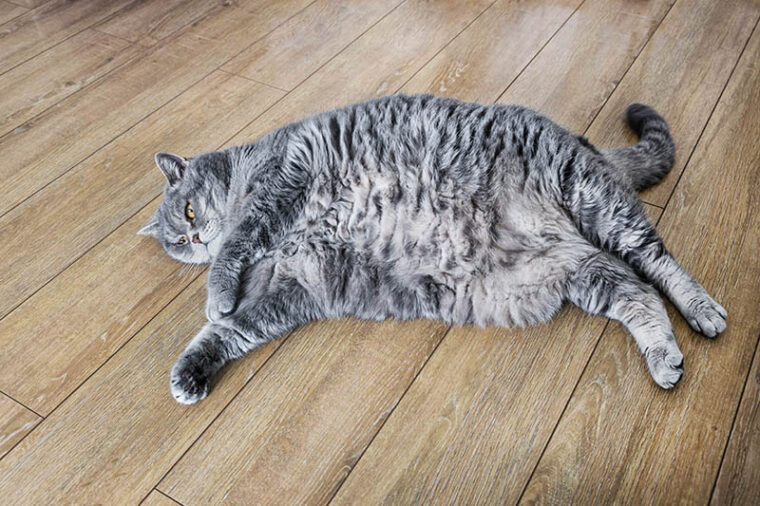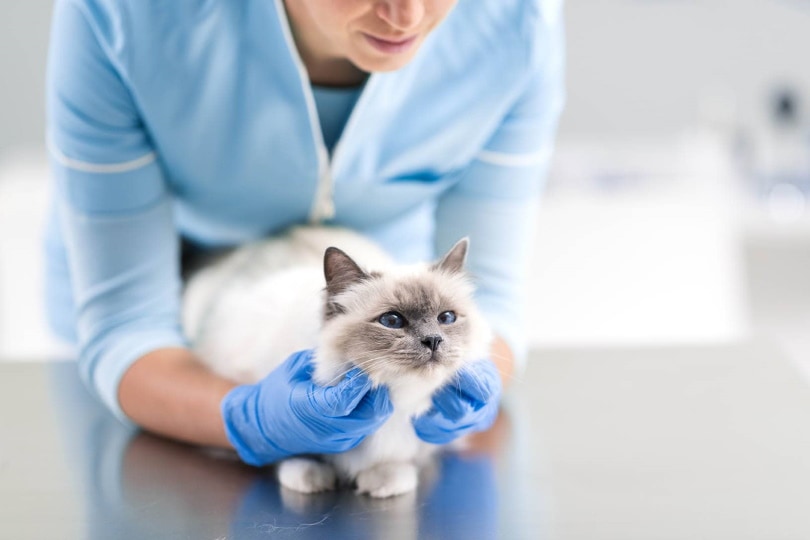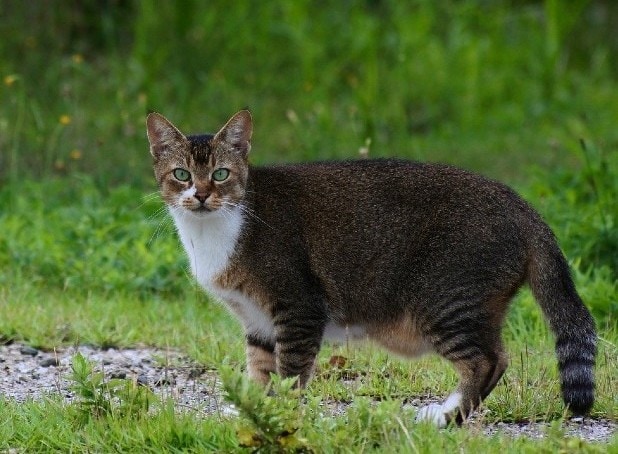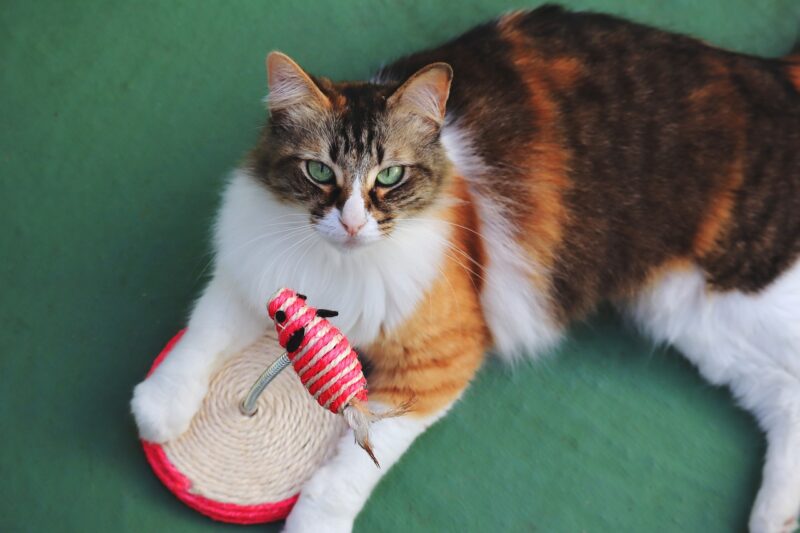
Have you noticed your cat looking chubbier than usual? Maybe you’re suspicious that your cat has put on some weight. If you’re not really sure if your cat is overweight or “just right,” we’re here to help!
As a cat ages, it’s common for them to put on a little added weight. Maybe your cat isn’t as active as they used to be or maybe they seem to be eating more food than normal.
A cat’s metabolism slows down when they get older, just like what happens to us humans. This means cats will burn fewer calories as they age, which can result in weight gain, especially if their activity level also decreases.
The 3 Ways to Tell If Your Cat Is Fat
Now that you know the “skinny” about a cat’s metabolism, let’s move on to determining whether or not your cat is fat. Since you live with your cat, it can be difficult to know if they have been slowly packing on the pounds. When your cat has long fluffy hair, it can be even trickier to know.
To get around all the confusion, we put together a few tried-and-true >ways to determine if your cat is overweight.
1. Run Your Hands Along Your Cat’s Rib Cage & Spine

Start by placing the palms of your hands on the sides of your cat, and run them along their back and rib cage. You should be able to feel your cat’s spine and ribs as you do this. An overweight cat will have extra fat in these areas, making it impossible to feel the bones.
2. View Your Cat From Overhead

When you stand over your cat and look down, you should see a slight indentation between the rib cage and the back legs. If your cat is fluffy and you can’t tell if there’s an indentation present, use your hands to feel for it. A fat cat won’t have any noticeable indentation.
3. Get a Side View

When looking at your cat from the side, they should have an upward slope to their back from the rib cage to the hips and not a round saggy belly. It is normal for an older cat to have a slightly saggy belly, as this is the primordial pouch, but it should not be round and puffy.
Risks That Fat Cats Face
A cat that’s too heavy can face many risks. First, a fat cat will find it more difficult to move with ease. Added weight can also put a cat’s joints under a lot of strain. The most common health risks faced by obese cats include:
In a nutshell, overweight cats face many health risks and a higher mortality rate so it’s always best to help your cat maintain a healthy weight.

Helping Your Cat Lose Weight
It’s much easier to help a dog lose weight than a cat because dogs can be taken for walks and runs and are willing to play and romp in the yard. A cat simply isn’t wired that way, so you’ll have to be more creative in amping up your feline’s activity levels.
A good starting point is to make time every day to play with your cat. Use their favorite toys that encourage movement. Good choices are feather toys, paper bags, boxes, and balls.
Another idea is to move your cat’s food bowl farther away from their favorite area to hang out, so they have to walk more. Just use your imagination to get your feline moving! If you have kids, ask them to play with the cat and to call them every now and then so they walk more around the house.
You can also help your cat drop some weight by feeding them frequent small meals instead of leaving their food bowl full all day. If your cat likes to beg for food between meals, give them affection instead, and stick to a strict feeding schedule. A good rule of thumb is to feed them at least four and up to six small meals a day.
Important Considerations
If you have determined that your cat needs to shed weight, it is important to make gradual changes and not to make a large cut in their daily caloric intake all at once. Cats need to lose weight gradually with controlled and closely monitored caloric restrictions. If they lose too much weight too fast, they suffer the risk of developing hepatic lipidosis.
Therefore, only small calorie reductions should be done at a time. We strongly recommend getting your veterinarian involved in your cat’s weight-loss journey and closely monitoring their body weight and caloric intake.
The Cat Food Matters!
The type of food you feed your cat plays a major role in keeping weight under control. If you’re currently feeding your cat a high-calorie, high-carb cat food, switch to a weight control cat food that has fewer calories and carbs. If your cat is a picky eater, try feeding them a weight control wet cat food that’s more enticing to finicky cats.
Complement this information by using our cat calculator tool here:
The exact amount of calories an individual animal needs to maintain a healthy weight is variable and influenced by many factors including genetics, age, breed, and activity level. This tool is meant to be used only as a guideline for healthy individuals and does not substitute veterinary advice
Cutting Back on Treats
Cat treats are often loaded with fats and calories. If you’re used to giving treats to your cat every day, cut back on how often you do so. If your cat begs for a treat now and then, try substituting a cuddle session for the snack, and see what happens. You may be surprised to learn that your cat wants your attention more than they want a cat treat!
No More Table Scraps
Keep your cat away from you when you’re eating so you’re not tempted to toss a few morsels down on the floor. Even if you tend to share healthy food with your cat, the calories add up quickly! With time, your cat will accept the fact that you’re not sharing your food with them anymore, so be patient!
Conclusion
As you can see, it’s possible to determine if your cat is overnight or not. If you discover that your cat is chubby, follow this advice to trim them down.
If you need more tips for helping your cat lose weight, your veterinarian will surely help, so don’t hesitate to ask! Once your cat drops some weight, they’ll be a happier pet and face fewer health risks.
Featured Image by: OlegDoroshin, Shutterstock









